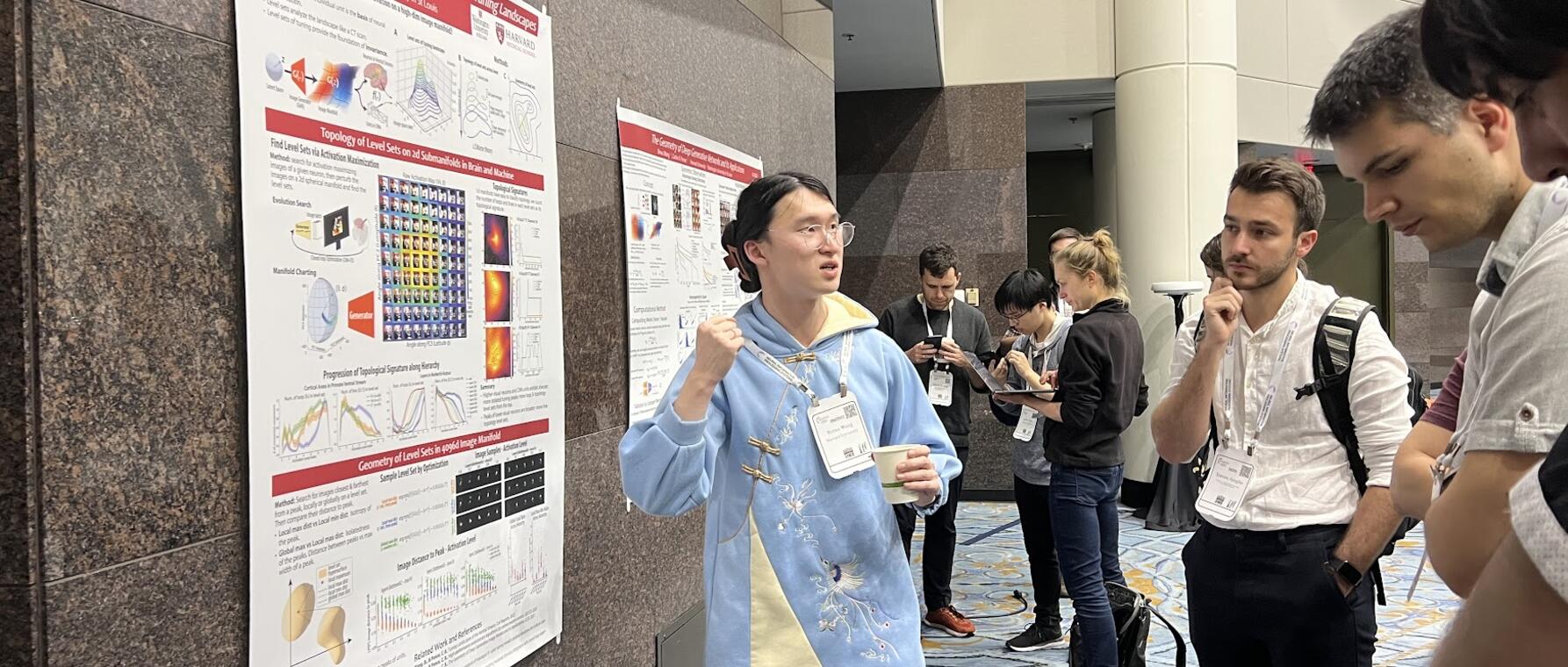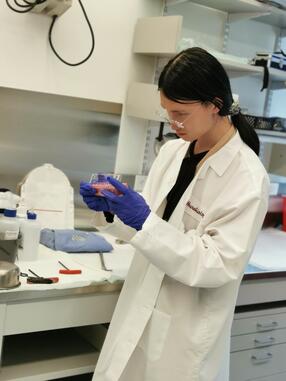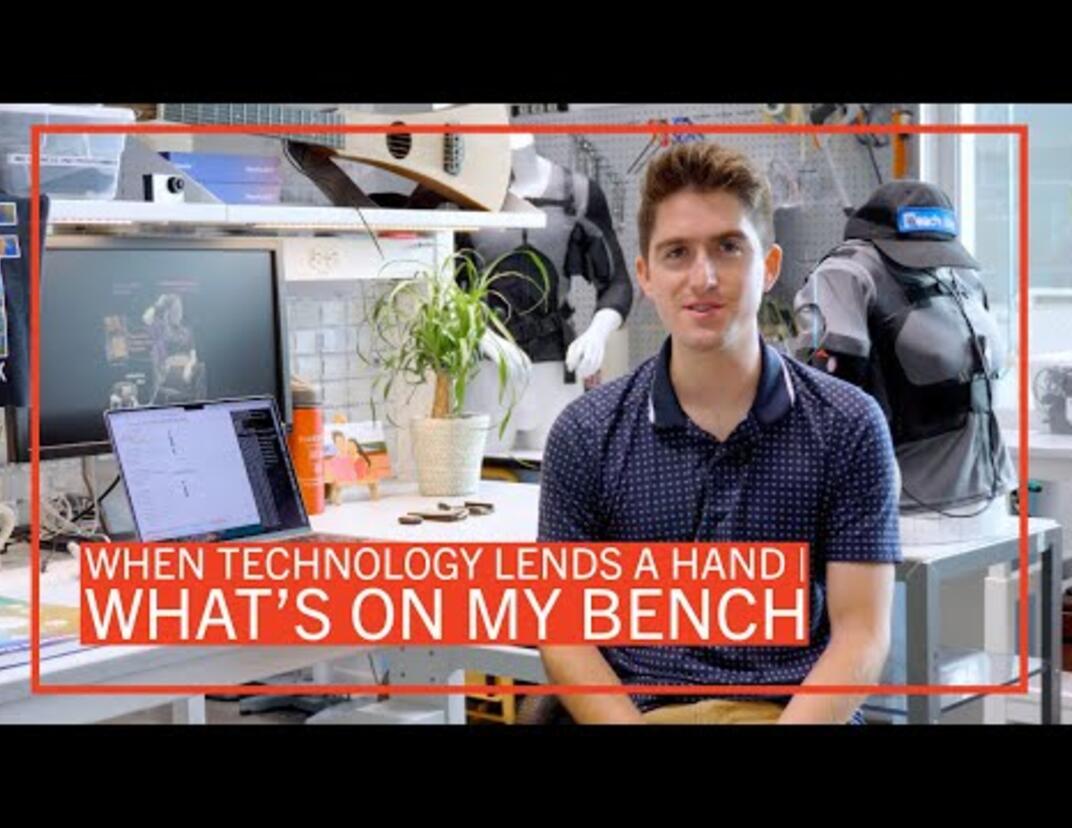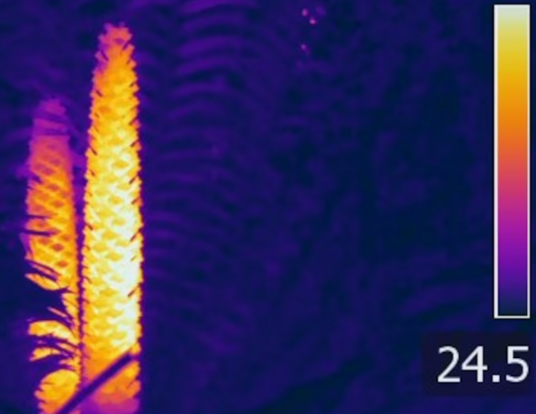At the Frontier of Intelligence
Binxu Wang, Special Students Program and Kempner Institute Research Fellow

Binxu Wang is a research fellow at Harvard’s Kempner Institute for the Study of Natural and Artificial Intelligence (AI), where she focuses on visual neuroscience and understanding generative AI. She discusses her research on primate brains, growing up intellectually curious in Beijing, and learning to survive in science as an introvert.
A Vision of Better AI
When I began my PhD journey, the generative AI technologies we recognize today—such as those that create images from text prompts—had not yet emerged. At that time, the most advanced generative models, like GANs, could only produce images of non-existent faces or cats. Nevertheless, the creative potential of these models has always fascinated me. During my PhD, I leveraged this potential to study the visual system by generating images from biological neurons. Towards the end of my PhD, I got increasingly interested in how these generative models work—how they create faces and scenes from seemingly nothing. So, I did some work to understand that process through math, physics, and computer science. That’s what brought me to the Kempner Institute.

My research goals are to understand vision in living beings, like humans and primates, how AI models generate their images, and how this creativity comes about. Understanding visual systems in primate brains—like those of humans and monkeys—reveals insights that can inform various technologies, including more efficient human-computer interfaces. Consider driving, a complex task that requires processing numerous visual cues. Some cues may be unhelpful or distracting, while others are crucial for safety. By making essential safety features more engaging and minimizing unnecessary distractions, we can create safer and more intuitive vehicle interfaces.
Creativity lies at the heart of what it means to be human, and the question of whether AI can truly be creative remains a subject of intense debate. Defining and understanding the boundaries of AI-generated creativity—and how that compares to our own—will be crucial for a future of human-AI coexistence. If AI’s creativity is seen as merely recombining existing patterns, can the same not be said of human creativity? Perhaps we are not as original as we believe. By studying AI, we may also gain deeper insight into our own creative processes and what truly defines human ingenuity.
Mind, Brain, Behavior
I grew up in Beijing and pursued higher education at Yuanpei College, Peking University. Although I majored in physics, I took classes in all sorts of things, like psychology, philosophy, math, and computer science. I was one of those kids who wanted to understand everything and was too ambitious to confine myself to a single academic path. Physics attracts me because I enjoy explaining seemingly complex phenomena through equations and universal theories. Though I deeply enjoyed theoretical physics, I realized that most physical phenomena in daily life have already been well explained by classic physics. The greater mystery, however, lies within us—our own minds, behaviors, and brains. So, in my junior year, I shifted my focus from the external world to the internal one, leveraging the mathematical tools I had acquired to understand the brains and behaviors of animals and humans. This transition led me to the field of computational neuroscience.
My PhD journey began at Washington University in St. Louis. In my third year of the program, my advisor, Professor Carlos Ponce, moved his lab to Harvard Medical School. I followed and enrolled at Harvard Griffin GSAS. His research deeply inspired me. Professor Ponce uses advanced generative models and artificial intelligence methods to understand primate brains. To give an analogy, when we use Facebook or Instagram, we look at posts and images and think certain things, and either we like the post or we don’t like the post. By interacting with the post or not interacting with the post, we express our preferences to the algorithms and tell them what we like and don’t like, and the algorithms will try to show us more things we like.
In a similar fashion, we can present stimuli to monkeys and record how their visual systems respond—whether they “like” a stimulus (responding strongly) or not. By leveraging generative models and optimization algorithms, we can rapidly adapt the stimuli presented to the monkeys, thereby deepening our understanding through interactions with their brains. My background in theoretical physics has provided me with the unique perspective of a geometer, enabling me to conceptualize neuronal activity as a landscape across a vast space of images. In collaboration with Professor Ponce, I leveraged these geometric insights to develop advanced control algorithms and more interpretable generative models. Using these tools, I studied the transformation of visual information through the brain.
Passion and Professionalism
When my lab moved from Washington University in St. Louis to Harvard, I joined a vibrant community of students, researchers, and professors who shared a profound passion for both science and art. Many of my graduate school peers excel not only in their research but also possess artistic talents. Their passion and talents were inspiring, encouraging me to be a better more colorful version of myself—for example, by starting to learn classical Chinese dance myself. Additionally, I gained invaluable insights from the Harvard scientific community on effectively publicizing my work, networking, and showcasing my research.

Professor Ponce has also been a great model of professional skills. As an introvert, I feared I wouldn’t thrive in the scientific community. When he once admitted that he is also introverted, I was surprised, especially since he appears so natural and effortlessly social with others. He demonstrated how to overcome these challenges by dedicating extra effort—thoroughly preparing for conversations and academic conferences and even incorporating jokes into his opening remarks. His example and support have been instrumental to my success.
Get the Latest Updates
Join Our Newsletter
Subscribe to Colloquy Podcast
Simplecast




